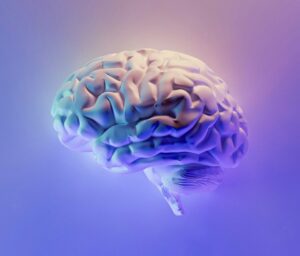3 Artificial Intelligence in the Classroom: Perils or Opportunities
Jack Massalski, TRU
Jack’s Linkedin: https://www.linkedin.com/in/massalski
 Imagine the following scenario: You ask a newly hired, recent university graduate to organize a company lunch with a specific budget, dietary requirements for vegetarian and gluten-free options, while prioritizing local vendors. How would you react if the employee came back to you saying they could not complete the task because they do not know how to use Google? I would certainly be taken aback.
Imagine the following scenario: You ask a newly hired, recent university graduate to organize a company lunch with a specific budget, dietary requirements for vegetarian and gluten-free options, while prioritizing local vendors. How would you react if the employee came back to you saying they could not complete the task because they do not know how to use Google? I would certainly be taken aback.
Do you remember when we first taught our students how to effectively use internet search engines? Many educators initially resisted, arguing that students should learn to use traditional research methods and library resources. Today, however, the ability to construct search queries and evaluate online sources is considered an essential digital literacy skill.
Analogously, we stand at a similar crossroads with artificial intelligence tools. Just as Google transformed information access, AI is revolutionizing content creation and information analysis. The question is no longer whether to incorporate AI into our teaching practice, but how to do so effectively while maintaining academic integrity and promoting genuine learning.
Consider, for instance, how we now teach students to use Boolean search operators such as AND or OR, quotation marks for exact search phrases, or tips on how to evaluate source credibility through website domain extensions and currency through publication dates. Similarly, students will need to learn prompt engineering—the art of crafting precise instructions for AI tools—and develop skills in verifying and critically evaluating AI-generated content.
The question is no longer whether to incorporate AI into our teaching practice, but how to do so effectively while maintaining academic integrity and promoting genuine learning.
Artificial intelligence has come a long way since the 1950s, when it was just basic programs solving math problems or playing chess. By the 1980s, more sophisticated software packages emerged allowing repetitive drills. The real game-changer occurred in the 2010s with machine learning, giving us today’s powerful language models such as ChatGPT. As a result, in today’s classroom, AI can:
- Personalize Learning: Algorithm adjusts to each student’s pace, offering tailored feedback.
- Grade Efficiently: Tools score quizzes and give early essay feedback.
- Boost Language Skills: Platforms provide conversation practice and grammar tips.
- Create Materials: AI generates practice exercises or lesson content.
- Track Progress: Systems streamline course planning and monitoring.
Nevertheless, in spite of its newness and attractiveness, AI as a technology is far from being perfect and should not be idolized. I recently came across a quote expressing this very sentiment by Paul Virilio, a French philosopher, who said the following: “When you invent the ship, you also invent the shipwreck; when you invent the plane you also invent the plane crash; and when you invent electricity, you invent electrocution. Every technology carries its own negativity, which is invented at the same time as technical progress.”
Indeed, the concerns about the use of artificial intelligence in education deserve careful consideration and demand practical solutions. Here is a list of some of the most common criticisms of AI use in education, as well as my suggestions on how to tackle them:
Does AI Stifle Thinking?

Critics argue that AI might become a “thinking crutch.” However, I strongly believe that when properly implemented, AI can actually enhance critical thinking. For example, having students analyze and critique AI-generated content develops evaluation skills. A practical approach to mitigate this challenge might be to:
- Have students compare multiple AI-generated solutions to the same problem
- Ask students to identify logical flaws or biases in AI responses
- Require students to justify why they accept or reject AI suggestions
To illustrate, in my own English classes, I have my students critique an AI-generated summary of a reading. I ask them to discuss whether the summary misses the point or is biased in any way. This activity helps my students to develop and strengthen their analytical skills.
What About Access Gaps?
Not every student has equal access to AI tools. While this is a valid concern, the problem can be addressed through:
- Equipping computer labs with devices able to access AI tools
- Creating paired or grouped learning activities where students can share resources
- Advocating for better technology access at the institutional level
While individual computer literacy may vary from student to student, in my own teaching context, all students have access to an internet-enabled computer which allows everyone access to various AI platforms. In addition, as I plan my teaching activities, I only use AI tools that do not require paid subscriptions.
Will Learning Remain Shallow?
To prevent superficial engagement with learning material:
- Design assignments that require synthesis of AI-generated content with personal analysis, or pair AI-based activities with reflection questions about the process
- Create rubrics that specifically evaluate students’ critical engagement with AI tools
- Implement project-based learning where AI serves as just one of many resources
I apply these principles in my English courses when teaching a unit on logical fallacies. I ask my students to use an AI platform to generate examples of specific logical fallacies, assess their accuracy and/or usefulness, justify their responses, and then finally, to personally reflect on the activity.
Tackling the Plagiarism Predicament
The general ease of access to AI-generated content may force a fundamental shift in how we think about academic integrity. You might want to consider the following points:
Prevention
- Require students to submit their AI prompts along with their assignments
- Design assignments that integrate personal experience and reflection
- Create in-class writing components for major assignments
Raising Awareness
- Develop clear guidelines (general or assignment-specific) for acceptable AI assistance
- Create assignments that explicitly incorporate AI while requiring original thinking
- Teach students to cite AI assistance just as they would human sources
In response to the above considerations, here is an example activity I am currently planning to use in a particular writing course. I will have my students use AI to draft a job or a scholarship application letter, then revise it with personal flair, explain their changes, and reflect on the process. I feel that following these steps would offer my students a perfect blend of AI help and original thought.
The general ease of access to AI-generated content may force a fundamental shift in how we think about academic integrity.
As instructors in Adult Basic Education, we must prepare our students for a world where AI is increasingly integral to their professional success. Regardless of your personal attitudes toward the use of AI tools in your teaching practice, it is evident that your students need AI skills for tomorrow’s jobs. Here are some steps that you can take:
Short-term
- Familiarize yourself with common AI tools
- Develop classroom policies for AI use
- Create assignments that meaningfully incorporate AI assistance
- Begin teaching the basics of prompt engineering
Long-term
- Integrate AI literacy into your curriculum objectives
- Develop assessment strategies that account for AI use
- Organize PD opportunities focused on AI integration
- Build subject-specific resource libraries of effective AI-enhanced activities
AI will not replace the human spark in teaching, but it can amplify it.
Everything points to the fact that the ability to effectively collaborate with AI tools while maintaining critical thinking and creativity will be essential and valuable in the future. Let us ensure our students are ready for this future by thoughtfully incorporating AI into our teaching practice today.
